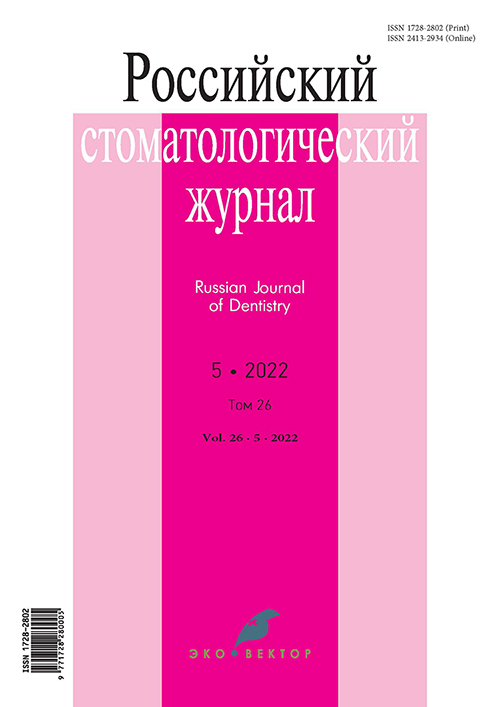New column in the journal — Digital Dentistry
- Authors: Arutyunov S.D.1, Olesova V.N.2, Lebedenko I.Y.3
-
Affiliations:
- A.I. Yevdokimov Moscow State University of Medicine and Dentistry
- Biomedical University of Innovation and Continuing Education
- Peoples’ Friendship University of Russia
- Issue: Vol 26, No 5 (2022)
- Pages: 367-369
- Section: Editorials
- Submitted: 22.09.2022
- Accepted: 13.10.2022
- Published: 23.12.2022
- URL: https://rjdentistry.com/1728-2802/article/view/111007
- DOI: https://doi.org/10.17816/dent111007
- ID: 111007
Cite item
Abstract
The modern way of life is rapidly transforming from an analog environment into a digital one. For the most part, these transformations take place in the field of healthcare and medicine. Dentistry is the branch of medicine in which digital transformation has provided opportunities for the implementation of tasks that were previously impossible for a practicing physician. Computerization made it easier for the dentist to diagnose, plan, and treat and allowed him/her to transfer preventive measures to a new high level, thanks to smart gadgets. Dental and orthopedic treatment has reached a new engineering level, incomprehensible for the 20th century, in designing devices and prostheses, as well as facial epitheses, and analyzing the durability of such structures. The machine production of dental products in the rapidly approaching future will undoubtedly make expensive therapeutic and prophylactic devices and prostheses, as well as facial epitheses, economically affordable for the majority of the population with disability in the Russian Federation. The flow of new but, unfortunately, not always reliable scientific and educational information sometimes misleads researchers and dentists. The creation of the heading “Digital Dentistry” is aimed at sharing the experience of novice researchers, practicing dentists, and recognized specialists, as a reference in the field of digital dentistry. We hope that the information collected will be useful for the Unified Medical Information and Analytical System, constantly updated with new arrays of information available to a wide range of users. This approach will bring dental care to a new and more effective level.
Keywords
Full Text
About the authors
Sergey D. Arutyunov
A.I. Yevdokimov Moscow State University of Medicine and Dentistry
Author for correspondence.
Email: sd.arutyunov@mail.ru
ORCID iD: 0000-0001-6512-8724
SPIN-code: 1052-4131
Dr. Sci. (Med.), Professor
Russian Federation, MoscowValentina N. Olesova
Biomedical University of Innovation and Continuing Education
Email: olesova@implantat.ru
ORCID iD: 0000-0002-3461-9317
SPIN-code: 6851-5618
Dr. Sci. (Med.), Professor
Russian Federation, MoscowIgor Yu. Lebedenko
Peoples’ Friendship University of Russia
Email: lebedenkoi@mail.ru
ORCID iD: 0000-0002-4050-484X
SPIN-code: 3863-2409
Dr. Sci. (Med.), Professor
Russian Federation, MoscowReferences
Supplementary files








